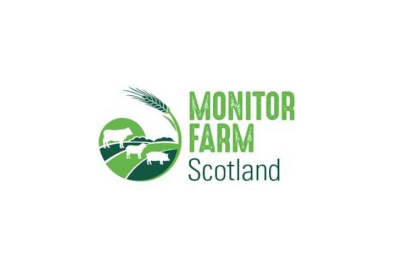
North Ayrshire Monitor Farm Boosts Farm Output & Profitability

Improved grassland performance, combined with technology and a change in breed policy, has helped raise farm output and profitability at Girtridge Farm, Kilmarnock.
Girtridge Farm is one of nine monitor farms established in Scotland as part of a joint initiative by QMS and AHDB Cereals & Oilseeds, with funding from the Scottish Government. The aim of the monitor farm programme is to help improve the productivity, profitability and sustainability of Scottish farm businesses.
John Howie runs the 175ha farm in a family partnership with mother Margaret and sister, Mary. Since the start of the programme, the suckler cows have been sold and the focus has shifted to expanding the ewe flock and improving efficiencies across the 220-250 head of stores and finishers
Speaking at the final meeting of the three year monitor farm programme, John Howie told attendants that involvement in the initiative had helped him to make informed business decisions. As a result, net farm output has increased by 66%, whilst gross profit has risen from -12% of output to +12% of output. The farms carbon footprint has also been reduced by 26%.
John Howie commented; “I feel the business is in a better position,” he said. “Before, the farm was a family farm and that’s fine, but now it’s a business. We look at the farm’s potential and maximise output and profit off every acre.”
Rotational grazing, combined with routine liming and reseeding, has helped boost grassland performance, enabling ewe numbers to be increased from 135 to 500. This has led to a 46% increase in stocking rates to 3.75LU/ha. Lambs have also achieved daily live weight gains of 377g/day on grass alone to eight weeks.
John has also undertaken a full change in sheep breeding policy to make better use of grass. This has involved changing from Mule and Texel x ewes to predominately Aberfield x Lleyn animals. Following a trial with different terminal sires, the business has also shifted towards using Abermax tups, rather than Suffolks or Texels.
John explained: “Looking at the death register and 100 day growth rates, the Suffolks were growing the fastest but had the highest losses. The Abermax had slightly lower growth, but less losses. That’s why we went down the Abermax route.”
Silage quality has also improved, thanks to having younger leys and cutting earlier. At 11.8ME and 15% crude protein, this has helped reduce the cost of the beef finisher ration, leading to his feeders margin increasing by 0.12p/head/day. Improved ventilation in the cattle sheds and better water provision has also boosted intakes and raised growth rates. John is also choosing younger, heavier stores so they get away quicker. All this has helped lower age at slaughter from around 27 months to 22 months.
With John providing the majority of the labour on the farm himself, cattle handling had always been an issue, meaning that management tasks to help assess performance weren’t always prioritsed. Through the Monitor Farm Scotland project, the community group and management group co-designed a new cattle handling set up, that the Howies have since built. This new cattle handling set-up includes weigh bars which means that they are now able to track growth rates. Combining this with EID management tags and a UHF reader also allows paperless, automatic recording and tracking.
John said: “As we finish cattle, everyone asks which animals are best and it’s an impossible question to answer. By recording daily live weight gains, we can track feed conversion efficiencies and identify the poorer performers in our herd. That will influence the type of cattle we buy or sell. It’s about refining our system and being really efficient, especially when margins are so tight.”
Monitor Farm facilitator, Raymond Crerar from SAC Consulting said there is no doubt that the business is in a better position.
“John has significantly increased his output with minimal additional capital expenditure,” said Raymond. “He’s still farming the same land, but the efficiencies we’ve made has allowed him to increase output and profitability on the same fixed cost structure.”

